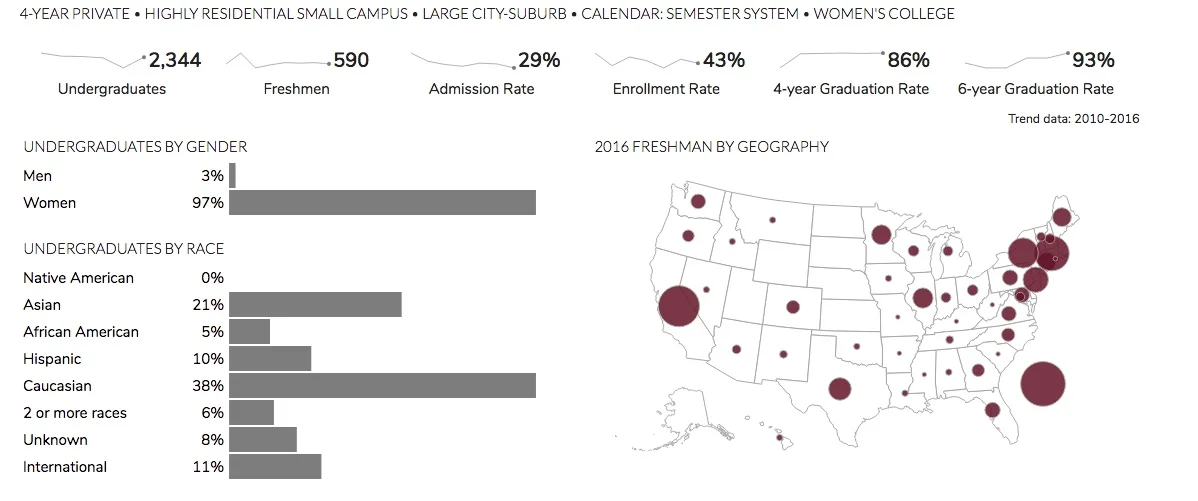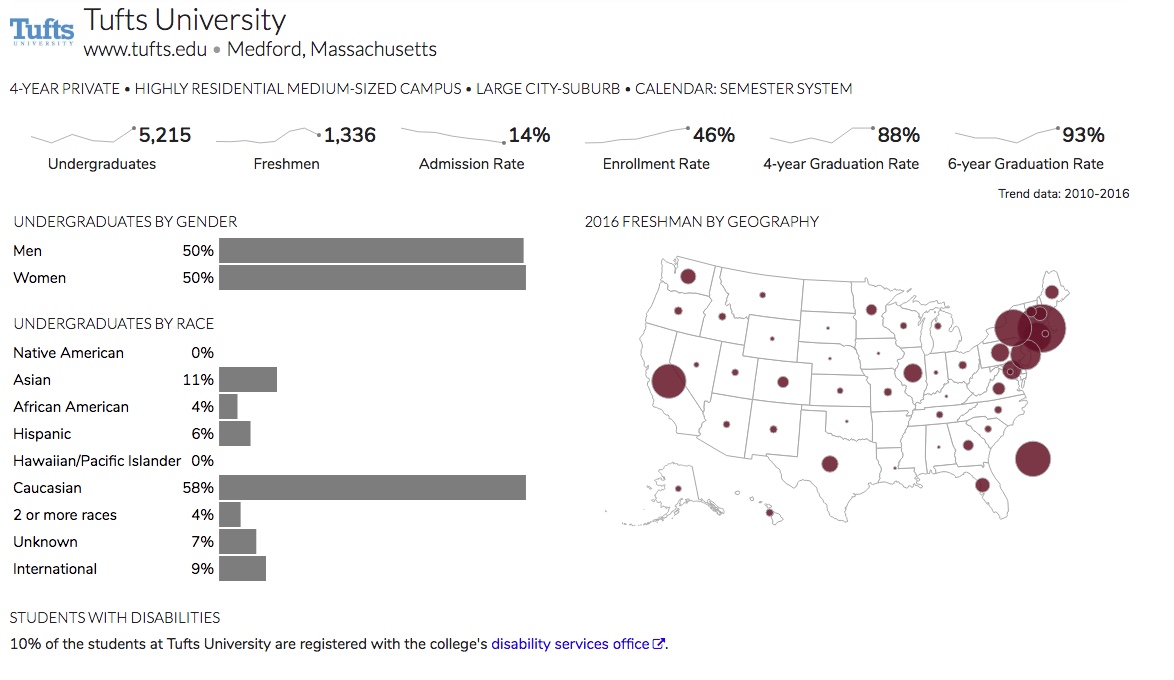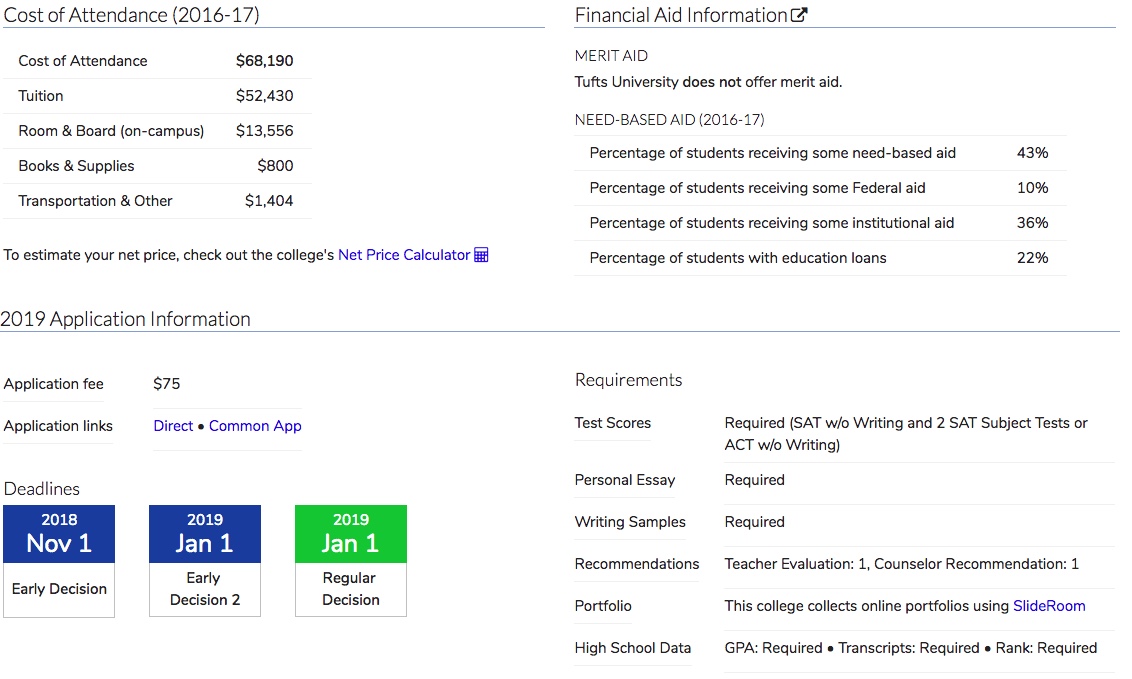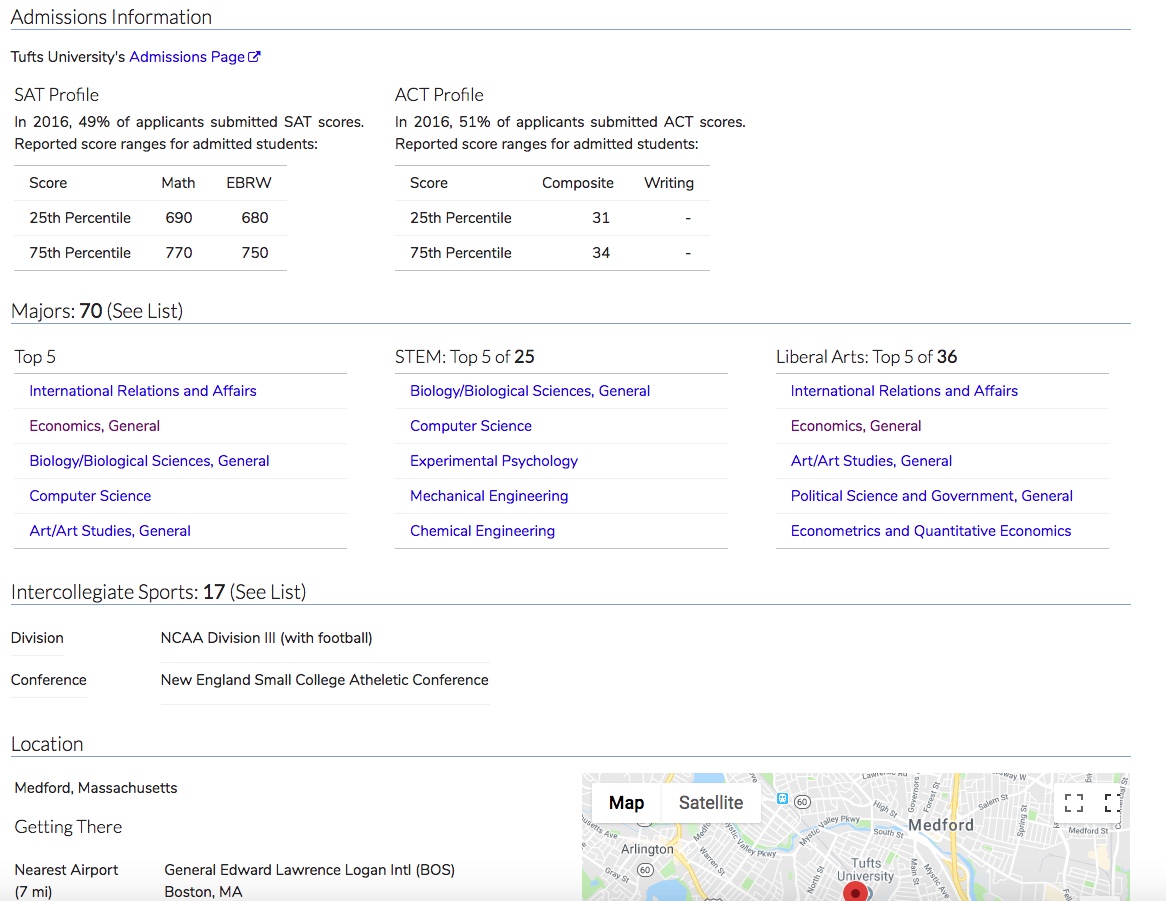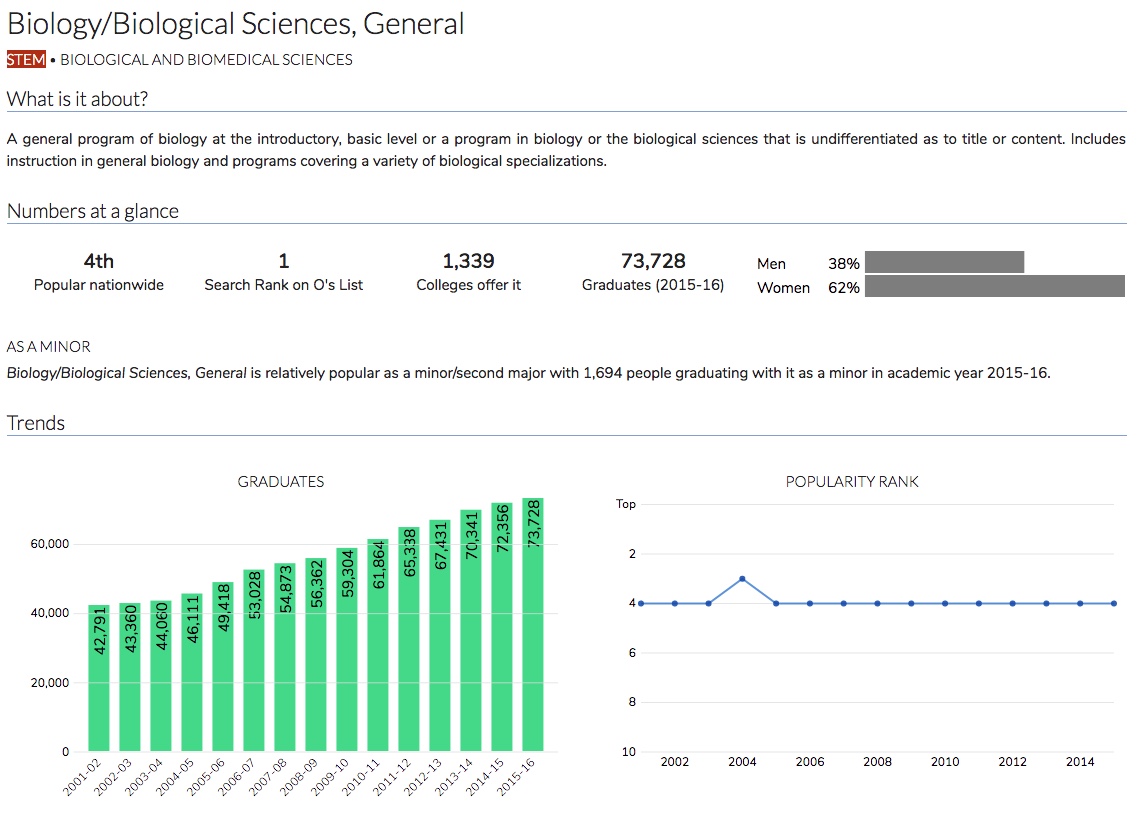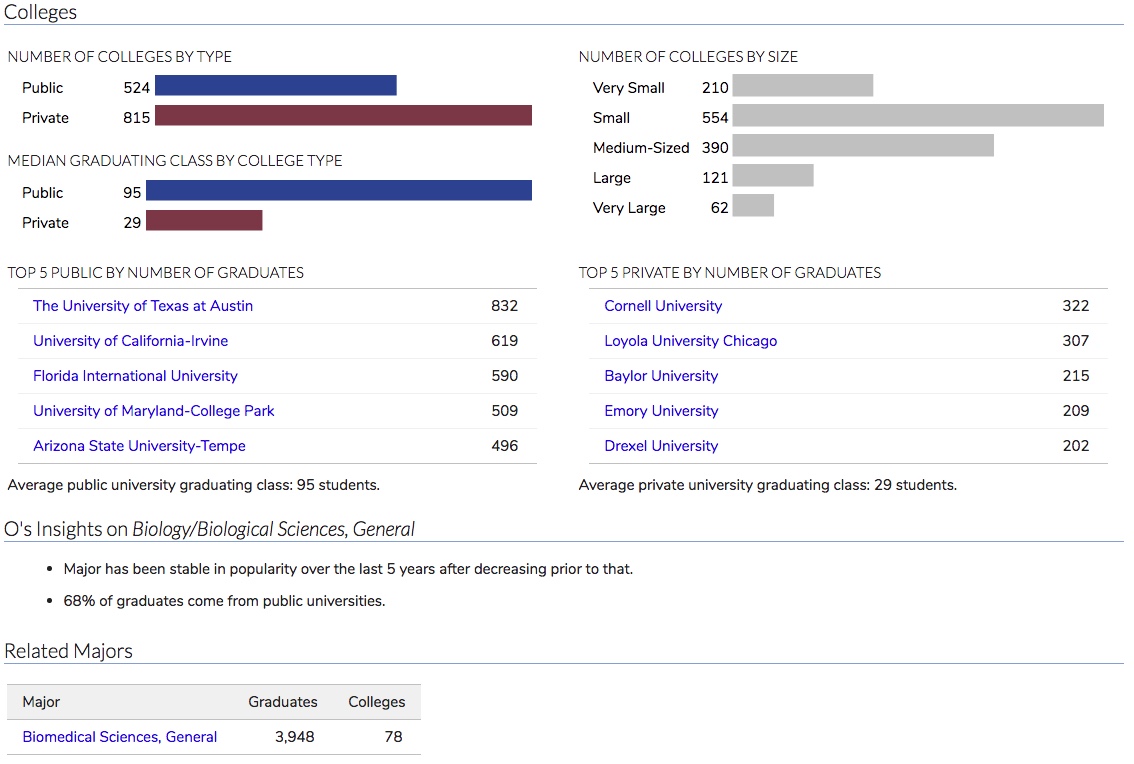O’s List: Bringing Discipline to the College Application List
If you are a high school student or the parent of one, you know that applying to college today is one of the most daunting and stressful activities that you will go through. Aside from the standardized tests, the essays, the graduation required coursework, the extra curricular activities and volunteering hours, and a thousand other details, the actual list of colleges that one chooses to apply to is no longer something that can be left to chance. Unlike thirty plus years ago in the United States (a time when folks just eyed a handful of schools and everybody managed to get in somewhere), application lists today are lengthy, many tiered affairs. This is because the college acceptance rate at the US New & World Report top 100 schools in the US has dropped steadily over the past 30 years. College applicants who don’t carefully construct a multi-tiered application list risk not getting in anywhere with a fixed application date.
One of the most important and difficult aspects of the college application process is the choosing of which schools to apply to. The list has to include a handful of schools that the student has a high probability of getting into (Safety), a group of schools with major programs that seem a good fit academically and which the student has a good chance of getting into (Target), and a short list of more competitive schools that are slightly out of reach for the student, but are worth taking a chance on (Reach). It might sound easy. But …
“It is no exaggeration to say that the current regime in elite college admissions has been far more successful in democratizing anxiety than opportunity.
”
There are over 3000 colleges and universities in the US. The schools make decisions based on applicant GPA, SAT/ACT test scores, the competitiveness of the high school, the competitiveness of the classes students take, the competitiveness of the major they want (for certain schools and majors), as well as extra curricular activities, recommendations, essays, socio economics, and a host of other factors that round out the applicants.
Now, getting that list together becomes a much harder nut to crack. There are college guidance counselors at most high schools, but they face the same issues that the students must deal with in selecting a list of schools. They now rely on the students and parents to be active participants in the process. However, most parents and students do not have the time, database access (many schools do provide this), or inclination to break the problem down, and run an optimization algorithm on the problem.
It would be nice if there were one place on the web that students and parents could go to for an automated college application list. A site that takes into account GPA, standardized test scores, the majors the student is interested in, and the geographic areas of interest, and runs some sort of super smart AI algorithm to provide the perfectly tailored list of colleges a student should apply to. To paraphrase Andy Weir from his book, The Martian: We are left with only one option: Someone is going to have to science the shit out of this. … and someone did!
Enter, O’s List.
O’s List is the brainchild of Oindrila Ray and Sameer Gupta, a couple with children in high school and who were wondering for a couple years how they would break down this massive problem into something manageable. After talking with other parents and school guidance counselors they realized that there was a void that needed filling. Both Oindrila and Sameer have advanced degrees in science and have worked in industries that require lots of data analysis, data management, and results reporting. Given the problem and their backgrounds, they decided that they wanted to bring the discipline of big data analytics to bear on a single, difficult and critical task in the college application process. That task is the selection of a list of schools to apply to in a student’s senior year of high school.
There is a ton of public data on the many colleges and universities across the US and O’s List takes that data along with student/parent input information (such as the high school they are attending, the student’s GPA, test scores, major interest, geographic targets, public vs private, and intercollegiate sports teams) and assembles a detailed list of schools in the three categories: Safety, Target, and Reach. These lists are computed based on proprietary data analytic algorithms that take dozens of variables into account.
“We are bringing the discipline of data analytics and machine learning to the optimization of the list of colleges that fit each student who comes to us. We do this to reduce the stress of college applications. We find colleges that will fit you, the unique you, and not where you will fit into. It’s all about the student and not about the college. The students and family are the drivers of the process.”
I tested the site out and it took only a few minutes to get to my first college list. What I like is the ability to save multiple lists and test out different scenarios in terms of majors and geographic locale. As a parent I can ask the site to tell me where my student might apply given interest in, say Biology vs Ecology vs Neuroscience. And I can check those majors out across the whole country or just a few states or even a single state. I can see what private schools and what public schools my child should apply to. I can look for colleges from super small (under 1000 students) to super large (20,000+ students) and three other levels in between. I can choose schools in a large, dense city or a small rural suburb and several levels in-between. I can tell the system I don’t care about the size of school or the type city it is in by selecting all these options. Lastly, I can indicate any intercollegiate sports my student has interest in.
After answering all these questions (less than 2 minutes of effort) the system rewards me with the three sets of schools (Reach, Target, Safety). When I click on each of the school links, a page displaying copious information on the school shows up, including, the application deadlines, attendance fees, acceptance rate, score (GPA, SAT, ACT) profiles of admit-tees, financial aid options, application fee, application requirements (standardized tests, essays, recommendations, transcripts, ranking), a list of majors broken down by STEM and liberal arts, intercollegiate sports, the location, and even what graduates are doing in terms of work and at what companies. This is available on each school in the list that the site computes for you. The Human Factors scientist in me appreciates the site’s ease of use as well as the clean display of information.
“Rather than a dump of all available data, we carefully choose the information and display in a way that does not induce brain overload and stress. Applying to college is, to some extent, stressful because of the overwhelming amount of information that must be sifted through, analyzed, and added to or removed from the applicants decision process.”
Other critical information, displayed in a banner across the top of each college information page, is the number of undergraduates, number of freshmen, the admission rate, enrollment rate, and four and six year graduation rates, each with a graph of six year trend data. This is all information that you as a parent or student want to consider. Graduation rate is particularly important because, who wants to pay to go to a school where the chances of finishing with a degree are low. (O’s List actually filters out hundreds schools from the master list of almost 3200, based on variables like graduation rate, retention rate, and grant aid. They don’t want to even suggest schools that are not providing actual value for the cost.)
Users can save up to 10 lists and parents and students can have separate lists. This makes it possible to test out majors, different geographic locations (which includes states, but also the size of the city where the college is located), and school sizes, to see what various possibilities are available. The system takes a lot of guess work out of putting together several lists of colleges. The process of creating a list takes less than 2 minutes. It really is that fast from typing in the high school the student attends (the first question) to saying if you are interested in participating in intercollegiate sports (the last question before the system crunches away for a couple seconds and then spits out your list).
I spoke with Oindrila about her motivations for starting this project besides wanting to utilize data analytic techniques to solve a thorny problem. She pointed out that she likes the idea of using AI, data, and cutting edge algorithms to reduce student and family anxiety and stress. And the site is democratic, that is, it does not care about client academics or financial level. Oindrila said that there have been several cases where the O’s List optimization engine has uncovered options that applicants have not thought of or known about. She even hinted that some folks with private counselors have used the site to stress test their counselor’s recommendations and fill in gaps.
“We want to be a service that any student applying to college can use to maximize their potential, whether they are destined for the Ivy League or the state University system. Everybody struggling through the college application process deserves a break.”
O’s List is designed to solve a problem for a wide variety of students preparing to apply for college. According to the about section of the site: To us, it does not matter if a student has a GPA of 2.5 or 4.5, a SAT score of 800 or 1600 … every student deserves the same degree of consideration, hope and support from us. This is what sets us apart. Our analytics and algorithms are designed to find any student their reach, target and safety colleges.
The system considers options across about 2800 colleges and universities, not just the top 100. Most private college counseling services have a select few colleges that they like to recommend to students and many college counseling services only want to take the top students (they often ask for your child’s grades going back all the way to grade school before they take you on as a client). What is more, counseling services can charge thousands of dollars and, depending on the student and level of service, can easily approach 20-30k in some cases. I recently read about a service that charges $100,000 to supposedly make your student look unique and desirable to top schools.
Another aspect of O’s List is a blog that has informative and timely articles on the college application process, financial aid, acceptance trends at the University of California schools, profiles of a handful of colleges, trends in STEM and Liberal Arts majors and much more. Most of the articles are the result of user interest in certain topics. The company is looking to expand the blog to include a variety of new topics that current users have suggested. Since the site is very data driven and run by people who understand how to analyze and present data, the articles often have informative graphics that break down trends and show clusters around things like the jobs that seek certain majors. And the data they use is all freely available to the public, so if you are so inclined, you can check their analyses.
Users can search for information on any major out there and get trend graphs on the popularity of the major as well as a list of the top universities by number of graduates in that major. There is an entire section, really a long article, on college and money that details the costs and, more importantly, explains how to apply for financial aid and what some of the terminology means. This is a very informative article if you have never read anything about how to pay for college. If you have already investigated financial aid, you might know a lot of what is discussed, but it is still a handy one stop resource with links to the sites you will need to visit if you are going to look for aid.
“One of the key differentiators is that we ask for very little personal information, unlike other sites, that ask for a lot of personal/financial information to show their options. That is the whole thing about AI: you don’t need to know someone’s name/dob/address to show their options.”
Another menu item produces a page with five maps of the US showing locations for different categories of universities. The categories include public colleges with merit aid, liberal arts colleges, private colleges with merit aid, private colleges without merit aid, and honors colleges. These maps provide an informative view of the spread of postsecondary schools across the US. There is also a section of the site that acts as a gateway to the individual applications for all schools in the US as well as the national common app and the common apps for the UCs and CalState schools.
And notice that I have not mentioned the cost of the service. That is because everything I have described up till now is free on O’s List. The site does offer a for pay option which consists of a service where users pay a one time fee of $249 to be able to text questions to Oindrila. There is a new service offering in the works that will center around the generation of a report from the student’s list of colleges that will provide targeted information on things like what SAT subject tests to take and other specific requirements. The service also will let you speak with a company representative on topics like: major specific application requirements, early action, early decision and restrictive early action, financial aid and merit aid, choosing a major(s), major job trends, non-academic parts of the application, and more. The company is currently reviewing it’s pricing structure. Oindrila tells me that they are considering $500 for 10 colleges and $950 for 20 colleges. There will be a 30 min initial phone conversation for both levels. The $500 tier will have one checkin at the end of early apps. The $950 tier will have monthly checkins and support till the student gets to college. They also plan to offer essay editing through a partner service. The goal is to automate as much of this reporting as possible and back it up with data analysis to intelligently streamline the college application process.
I am impressed by the breath of this site as well as the output that I received. The information access coupled with the behind the scenes algorithms that deliver highly targeted content in the form of personalized college lists is phenomenal. I see this site as a game changer for parents and students in the quest for a list of schools that makes sense and gives the student the best chance at acceptance letters come March. If you are a parent or student who is starting to think about college, I encourage you to take five minutes to check out O’s List and test drive the process. Take a look at the articles, sign up for the free service (this only requires an email and password. No personal information is collected) to save some lists, and view the other site resources. I think that you will find it to be a valuable resource in your college application process.

